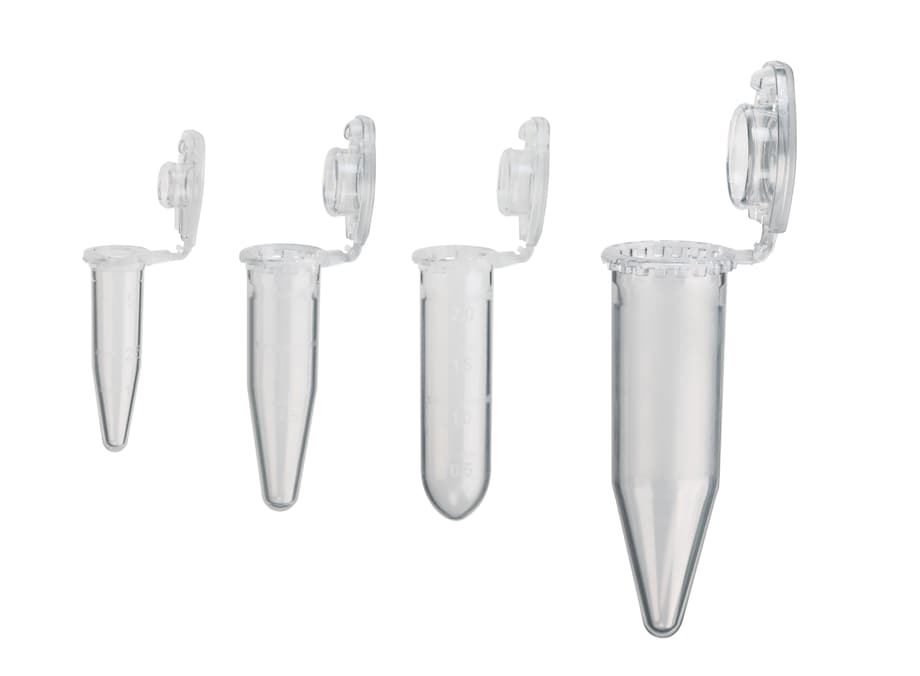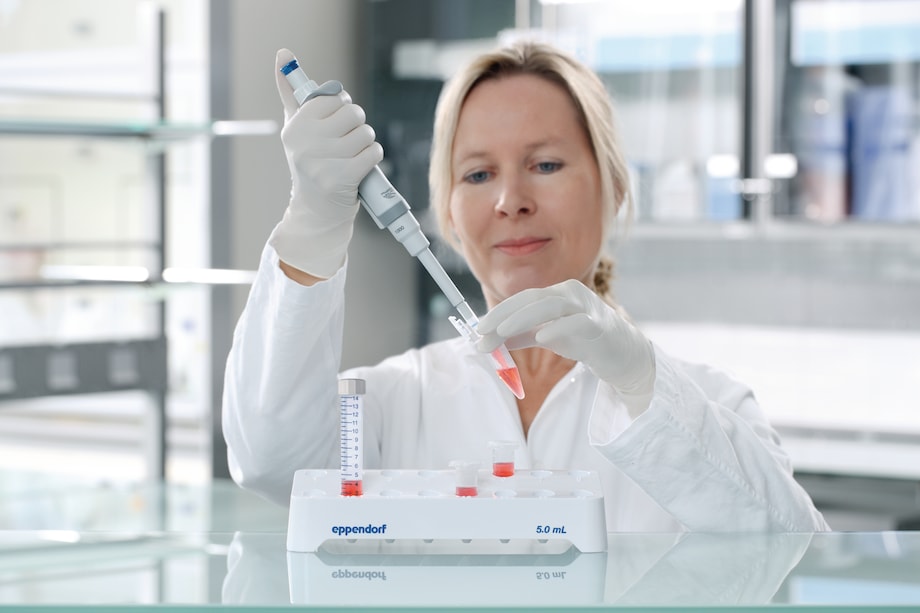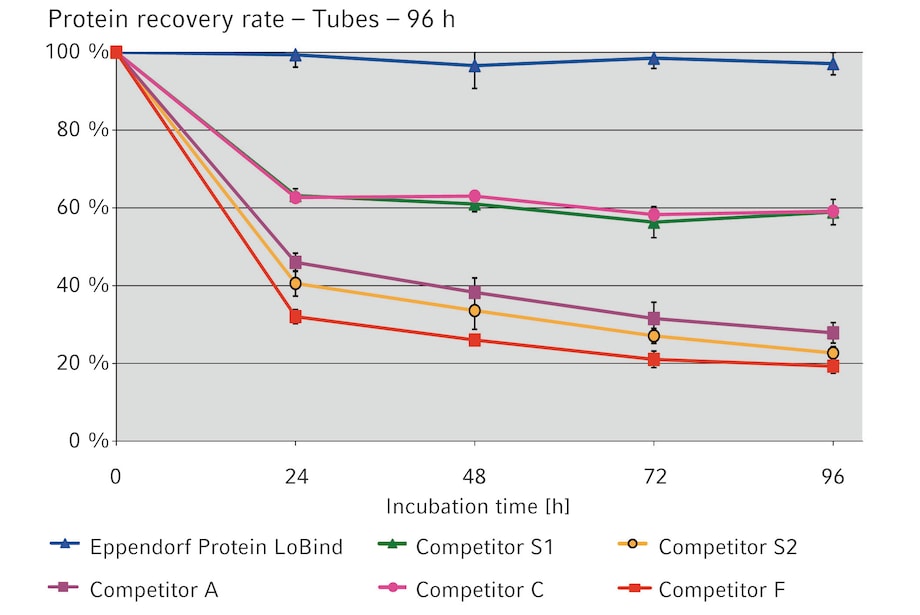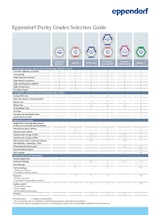No results found
Search Suggestions
Protein LoBind® Tubes
Product Information
Whether it’s proteomics or another field of protein research, the Eppendorf Protein LoBind Tubes are specifically designed to ensure you get maximal protein recovery. Recover more of your valuable protein samples to facilitate accurate downstream analysis and help prevent enzyme degradations.-
Request lot-specific certificates (not applicable for "Eppendorf Quality")
-
Learn more about purity grades available from Eppendorf
You will find additional download material at the bottom of this page
Single Devices (11)
|
|
|
|
|
|
|
|
|
|
Added to Your Cart
Product Information
Applications
Features
Product Information
Prevent sample loss due to sample-surface binding with the Eppendorf Protein LoBind Tubes. With a unique, two-component polymer mix that helps to create a hydrophilic surface, protein recovery rate and downstream analysis is significantly improved.
With standard vessels, over 90 % of the sample can be lost within 24 hours due to binding to the plastic surface. Use Eppendorf LoBind Tubes and you don't need to worry about losing your precious samples any longer!
With standard vessels, over 90 % of the sample can be lost within 24 hours due to binding to the plastic surface. Use Eppendorf LoBind Tubes and you don't need to worry about losing your precious samples any longer!
Eppendorf Protein LoBind® products
Protein LoBind® products are available in various formats, including tubes, microplates and deepwell plates to ensure the needs of your specific application are met. Whether you’re looking to scale down sample volumes or increase throughput, the LoBind range is here to help.
Superior protein recovery
Recover more than 90 % of your protein compared to standard vessels! Eppendorf Protein LoBind® Tubes also offer a significantly higher rate of recovery after incubation for 96 hours in comparison to competitor low binding tubes. See Application note 180 for more details.
Outstanding signal during MALDI-TOF with Protein LoBind® Tubes
Protein LoBind® Tubes help to increase signal intensity during MALDI-TOF analysis, allowing you to detect and analyse at concentrations normally considered undetectable (1 pmol) when compared to standard tubes. In these graphs, the arrows identify the signals in each experiment. (Source: Dr. S. Seeber and Dr. Humeny, Institute of Biochemistry, University of Erlangen-Nürnberg, Germany, see Application Note 180 for more details).
Downloads: Protein LoBind® Tubes
Filter
Reset all
Language (1)











































